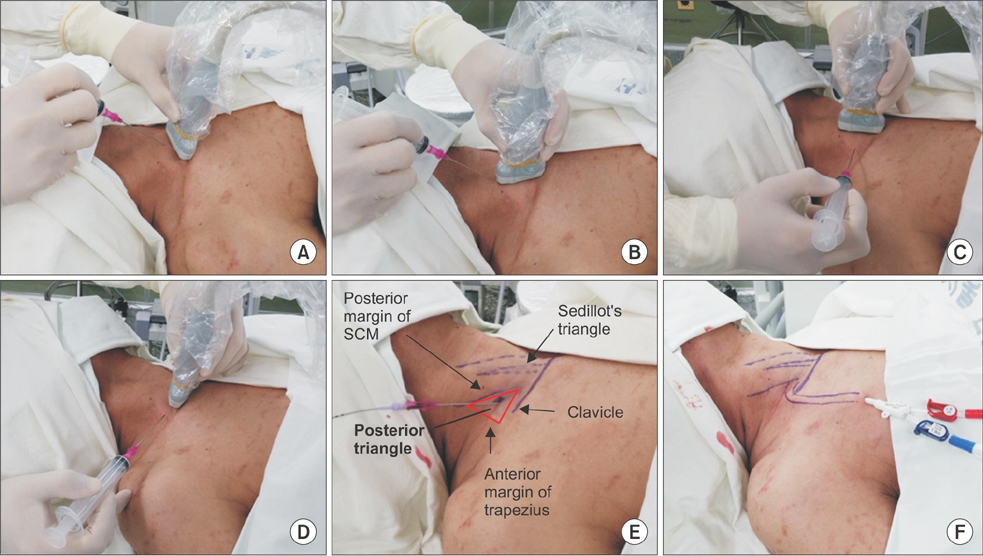Ann Surg Treat Res.
2015 Feb;88(2):114-117. 10.4174/astr.2015.88.2.114.
Posterior triangle approach for lateral in-plane technique during hemodialysis catheter insertion via the internal jugular vein
- Affiliations
-
- 1Department of Surgery, Soonchunhyang University College of Medicine, Seoul, Korea. ultravascsurg@gmail.com
- KMID: 1804130
- DOI: http://doi.org/10.4174/astr.2015.88.2.114
Abstract
- A recent widespread concept is that ultrasound-guided central venous catheter insertion is a mandatory method. Some techniques have been introduced for ultrasound-guided central venous catheterization. Among them, short-axis lateral in-plane technique is considered to be the most useful technique for internal jugular vein access. Therefore, we used this technique for the insertion of a large-bore cuffed tunneled dual-lumen catheter for hemodialysis. Additionally, a lesser number of catheter angulations may lead to good flow rates and catheter function; we recommend that skin puncture site in the neck at the posterior triangle is better than the Sedillot's triangle. Using this approach, we can reduce the possible complications of pinching and kinking of the catheter.
MeSH Terms
Figure
Reference
-
1. Cho JB, Park IY, Sung KY, Baek JM, Lee JH, Lee DS. Pinch-off syndrome. J Korean Surg Soc. 2013; 85:139–144.2. Bannon MP, Heller SF, Rivera M. Anatomic considerations for central venous cannulation. Risk Manag Healthc Policy. 2011; 4:27–39.3. Lamperti M, Bodenham AR, Pittiruti M, Blaivas M, Augoustides JG, Elbarbary M, et al. International evidence-based recommendations on ultrasound-guided vascular access. Intensive Care Med. 2012; 38:1105–1117.4. Hind D, Calvert N, McWilliams R, Davidson A, Paisley S, Beverley C, et al. Ultrasonic locating devices for central venous cannulation: meta-analysis. BMJ. 2003; 327:361.5. Rossi UG, Rigamonti P, Ticha V, Zoffoli E, Giordano A, Gallieni M, et al. Percutaneous ultrasound-guided central venous catheters: the lateral in-plane technique for internal jugular vein access. J Vasc Access. 2014; 15:56–60.
- Full Text Links
- Actions
-
Cited
- CITED
-
- Close
- Share
- Similar articles
-
- ERRATUM: Correction of affiliation: Posterior triangle approach for lateral in-plane technique during hemodialysis catheter insertion via the internal jugular vein
- Cut-down method for perm catheter insertion in patients with completely occluded internal jugular vein
- Right Internal Jugular Venous Thrombosis Occurred after Long-term Placement of Hemodialysis Catheter Inserted Via Right Subclavian Vein: A Case Report
- A case of paroxysmal atrial fibrillation induced by internal jugular venous catheterization for hemodialysis
- The difference of complications and overall survival according to the types of vascular access in hemodialysis



